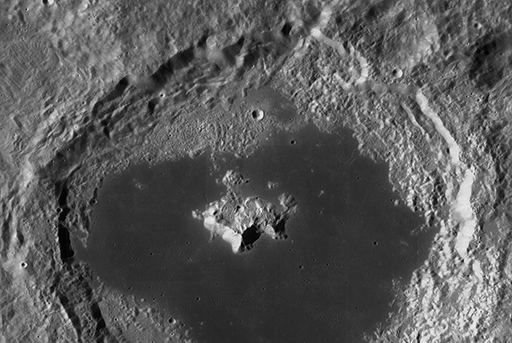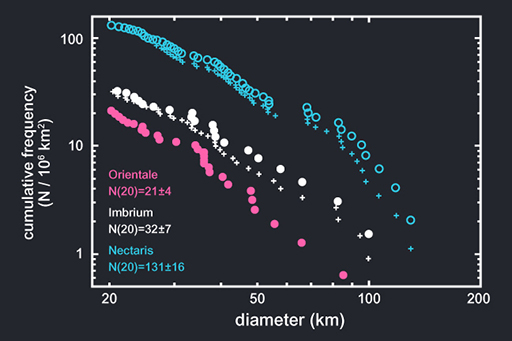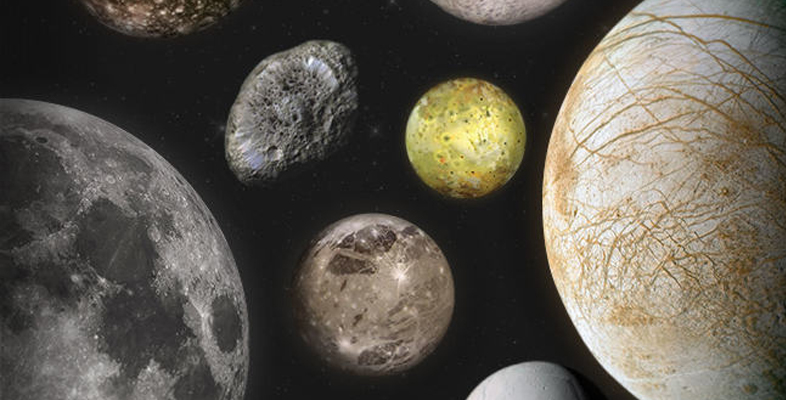3.5 Crater counting in detail
Since the return of lunar samples, estimation of age has become a much more exact science. Dates for the lunar maria and highland areas have been used to calibrate the relationship between crater sizes and the number of craters in a given area of the Moon’s surface. The Moon’s surface has been heavily cratered and, unlike on the Earth, lunar craters are preserved. We even know there is a good record of the Late Heavy Bombardment, which pre-dates any remaining rocks at the Earth’s surface. The Earth certainly went through a similar rain of asteroids and comets around 4 billion years ago but the subsequent re-surfacing of the Earth by plate tectonics, weathering and erosion has erased most impacts, even the largest ones.

The counting of craters on different surfaces can give an idea of the sequence in which different terrains formed. While it doesn’t straightforwardly give an age in years, this method is very precise for working out the order in which events happened on the Moon and other celestial bodies. When you expanded the image did you notice how few craters there were in the mare compared to the highlands? There are two main factors to be taken into account: the density (i.e. number per unit area) and the size of the craters. Within a given terrain there is a strongly reproducible relationship between the density of craters and their size. There are fewer large craters and more small craters as the size–frequency distribution plot below shows. Using this, scientists have managed to characterise the age of different terrains on the Moon’s surface and use the same calibration to determine the age of surfaces on other bodies such as Mars. While the calibration is different, the same effect is the reason why the surface of Europa, for example, has few craters and the asteroids (which have no re-surfacing) are heavily cratered.

At this stage you may be wondering if a geological map of the Moon has been made yet. The answer is that it has. The United States Geological Survey has prepared a map of the Moon’s near-side [Tip: hold Ctrl and click a link to open it in a new tab. (Hide tip)] .
See also: LROC interactive map of the Moon’s surface. If you would like to explore the Tsiolkovskiy crater (or any of the other craters on the Moon) in greater detail, you can use this LROC interactive map.
